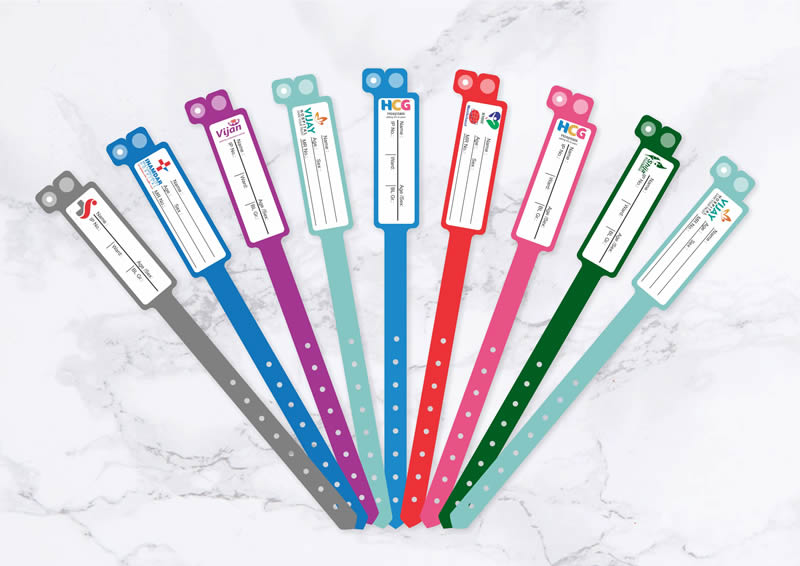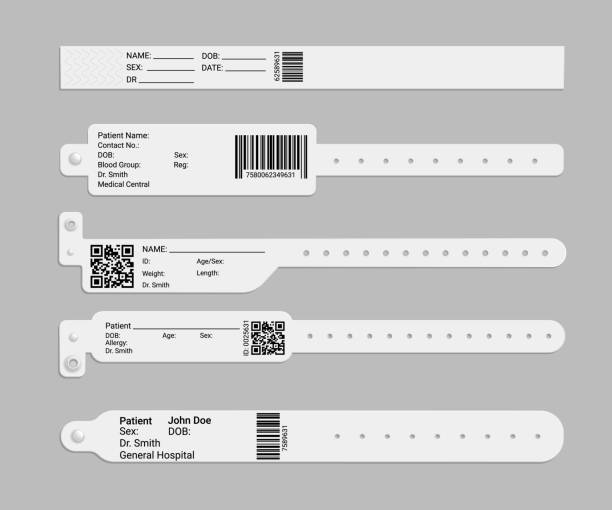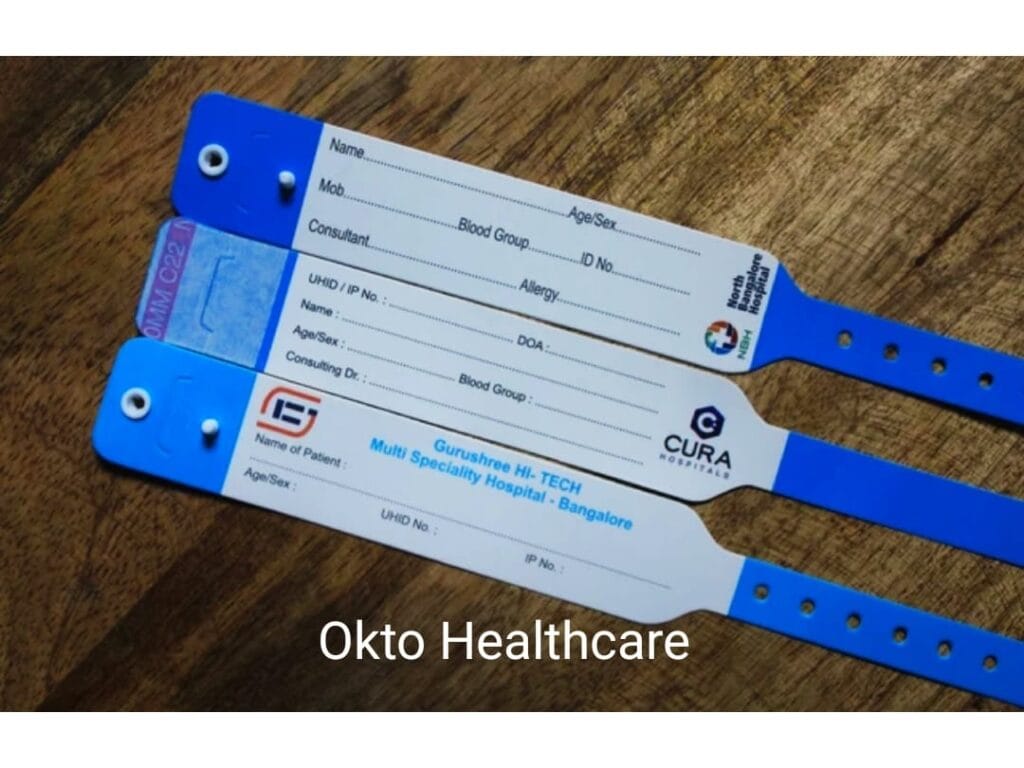Just How Patient Identification Band Assists Prevent Medical Errors and Mistakes
Wiki Article
Improving Patient Treatment With Effective Recognition Bands
The implementation of effective identification bands is a critical element in improving individual treatment within medical care settings. As the landscape of person recognition evolves, one have to consider the ramifications of these systems on general health care distribution and patient results.Value of Individual Identification
Making sure exact individual recognition is essential in healthcare settings, as it directly influences the safety and high quality of care provided. Misidentification can cause severe mistakes, including carrying out the wrong medication, performing wrong treatments, or miscommunicating vital person details. Such mistakes not just endanger person safety yet can additionally lead to legal ramifications and decreased count on healthcare systems.Efficient client identification is basic to establishing a safe atmosphere where clients receive personalized and ideal care. It promotes the precise documentation of case histories, allergic reactions, and treatment strategies, guaranteeing that medical care service providers have accessibility to necessary information in any way times. Moreover, robust recognition protocols assist streamline interaction among medical team, improving cooperation and minimizing the risk of errors.

Sorts Of Identification Bands
Recognition bands play a critical role in keeping accurate person documents and improving safety within medical care settings. Various kinds of recognition bands are made use of to accommodate the specific requirements and needs of various client populations.
An additional kind is the ankle band, which is specifically valuable for babies and newborns, making certain that recognition stays undamaged even throughout treatment procedures. Specialized bands, such as those for allergy signals or fall danger indications, give extra layers of safety and security by attracting instant focus to important client problems.
Just recently, digital recognition bands have gotten appeal, incorporating barcodes or RFID innovation that can be checked to quickly fetch patient data. These bands enhance operations and reduce the threat of human error throughout individual identification processes.
Advantages of Reliable Recognition
Effective identification of clients through making use of recognition bands adds significantly to total client safety and care quality. By ensuring that each patient is accurately identified, health care carriers can efficiently match clinical treatments and treatments to the proper person, decreasing the risk of mistakes. This is especially vital in atmospheres with high individual turnover, where the potential for misidentification is higher.Additionally, efficient identification bands enhance interaction among health care groups. Clear and precise patient recognition promotes cooperation and guarantees that all staff member are conscious of a client's certain demands and case history. This interaction is important for supplying worked with care, particularly in emergency circumstances where time is important.

Eventually, efficient identification with the usage of recognition bands not just safeguards people however likewise advertises a culture of safety and security within medical care facilities (Patient Identification Band). By prioritizing precise recognition, medical care companies can improve end results and boost the total individual experience
Applying Recognition Equipments
While the significance of individual identification is well recognized, the execution of robust identification systems poses a facility obstacle for medical care organizations. Establishing reliable identification systems calls for a detailed strategy, including technology, employees training, and procedure combination.First, companies should pick proper identification technologies, such as barcode scanning, RFID, or biometric systems. Patient Identification Band. These modern technologies must be assessed based upon expense, use, and compatibility with existing infrastructure. A pilot program can help see this page recognize potential concerns prior to full-blown implementation
Next, comprehensive training for personnel is vital. All employees must comprehend the relevance of exact individual identification and excel in making use of the selected modern technologies. Routine training updates and assessments can enhance ideal methods and make certain ongoing compliance.
In addition, healthcare organizations must establish standard procedures for client recognition throughout all divisions, minimizing inconsistencies and boosting interaction. Normal audits can help identify spaces in adherence to these procedures.

Eventually, an effective execution of recognition systems not only enhances patient safety and security but likewise fosters a society of responsibility and persistance within medical care setups, making sure trusted and regular person treatment.
Future Trends in Client Recognition
Advancements in modern technology are readied to reinvent individual identification methods in health care settings. The assimilation of biometric recognition approaches, such as fingerprinting and face acknowledgment, is expected to enhance precision and protection. These innovations can significantly minimize the danger of misidentification, ensuring that individuals get home the appropriate treatments and drugs.Additionally, the implementation of blockchain innovation for individual documents is gaining traction. This decentralized method can provide a safe and secure and tamper-proof method for taking care of individual identities, therefore improving access to important details across different health care carriers.
An additional trend is the raising use of mobile wellness applications that leverage QR codes for client recognition. These applications enable real-time updates and easy accessibility to individual data, encouraging healthcare experts to make enlightened choices quickly.
In addition, synthetic knowledge (AI) is positioned to play a key role in examining patient identification data, recognizing patterns, and predicting possible identification errors before they happen.
As these technologies advance, they guarantee not only to boost individual safety and security but also to improve the total effectiveness of health care distribution systems. Embracing these developments will be essential for future-proofing patient treatment techniques.
Conclusion
To conclude, reliable identification bands are necessary for enhancing patient safety and care high quality within medical care setups. By minimizing the risks related to misidentification, these bands promote precise and timely information access, inevitably boosting interaction amongst health care providers. The execution of durable recognition systems not only fosters a culture of security but additionally placements medical care establishments to adjust to future patterns in person recognition innovation, making certain ideal results for clients in diverse clinical settings.As the landscape of individual recognition develops, one should consider the effects of these systems on overall healthcare distribution and individual outcomes.Reliable person identification is basic to developing a safe atmosphere where clients receive individualized and appropriate care. Eventually, prioritizing effective individual recognition strategies not just fosters a culture of safety however also adds to improved individual outcomes and general complete satisfaction with healthcare solutions.
Effective identification of people through the usage of identification bands contributes considerably to total patient safety and security and care quality. The application of durable identification systems not only promotes a society of safety however additionally positions medical care establishments to adapt to future patterns in patient identification innovation, guaranteeing ideal end results for patients in diverse medical environments.
Report this wiki page